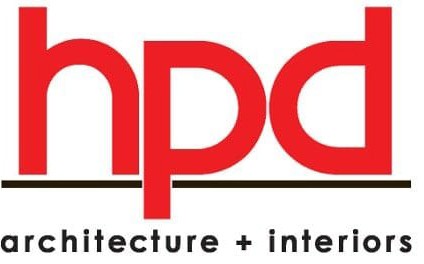Imagine finally having the opportunity to renovate or expand your home. You’ve saved up the money you need, met with an architect, and secured a home improvement loan. Now, before beginning your home renovation project, you need to go to the city permit office to get the permits you need.
The city permit office issues building permits, reviews construction plans, and performs safety and compliance inspections to ensure that your home complies with all state and local codes. If you want that renovation or expansion project to be completed, you will need to get the right permits on a timeline that supports your project.
Unfortunately, the processes that the city permit office is required to follow frequently delay or tank a project, costing you time and money. This can be an incredibly frustrating experience. The bright side is that we have a few strategies to help you navigate the red tape.
Why Building Permits Get Delayed or Rejected
There are a number of reasons why your building permit could be delayed or rejected. Here are some of the most common:
Improperly Filled Out Paperwork
One of the most common reasons why the city permit office will reject or request changes to your permit is because of improperly filled out paperwork. This could be that there is an outright error in the paperwork or that there is a lack of overall completeness.
To avoid this, the permit package needs to clearly show what you plan to do with a clear site layout and related drawings. While this won’t guarantee approval or ensure prompt approval, it will reduce the chance of an avoidable delay.
Real-life scenario
During a recent master bathroom remodeling project, the contractors were responsible for submitting permit packages, and we ran into permitting issues about removing a wall and adding a new window. Since the bathroom remodel only affected one area of the house, the drawings originally submitted only focused on that part of the house. We didn’t want to waste our client’s money to measure the entire house.
However, the city permit office rejected it and required us to resubmit the form with the entire floor plan and elevations for the whole house, not just the rooms affected. The whole house had to be measured, the architectural drawings updated, and the plan resubmitted.
Lack of Professional Stamp on Permit Drawings
Most city permit offices require drawings to have a professional stamp or seal in place. If there isn’t a seal or if it has been smudged and isn’t legible, then the permit office will not be able to accept it and will send it back to get the appropriate stamp or seal. This also applies to the signatures that the city permit office needs.
No Response to Rejections
When the city permit office rejects your plans, it is important to respond to that rejection promptly to avoid further delays. Otherwise, it may create an even longer delay. Even if you can’t get the new plans to them on the same day, it’s a good idea to acknowledge that you are working to resolve the problem.
Corrections
In many cases, the city permit office may request corrections to your drawings before they approve them. Most city permit offices have corrections departments for this exact purpose. Try not to be alarmed if your drawings need corrections, as this doesn’t necessarily mean that your project won’t get the permit.
Tips for Working With the City Permit Office
There are some projects that will not receive approval from the city permit office. However, there are some things you can do to have a better experience working with the city permit office and increase your chances of quicker approval.
Be Prepared
As you begin work with the city permit office, be prepared mentally that you may face some rounds of corrections on your drawings or plans. This doesn’t mean that your project won’t get the approval it needs.
Aim to submit permit packages as soon as the timeline allows to give yourself some buffer room against these delays. If you can submit the permit package 60 days prior to the planned construction, do so. Always plan to submit it as early as you can.
Do Your Homework
Do thorough research on what building codes your project needs to comply with and what documentation needs to be submitted by when. By providing as much detail upfront during the initial submission, you can save yourself time from corrections.
Remain Calm and Kind
It can seem like a big deal to receive a correction or a denial or a delay on your building permit. Even so, it’s important to remain calm and kind when working with employees of the city permit office. They’re just doing their jobs. Being disrespectful or aggressive to them won’t help you get your permit approved – in fact, it could delay it even further.
Remember that most permits do get approved in the long run. Ask calmly what you need to do to move the permit forward.
Get Prior Approvals
Sometimes you need to get other types of approvals for the city permit office to issue a building permit. It’s important to know when you need those approvals in the building process before you get started. If you need a zoning permit or a site study, be sure to get all of those approvals in advance. This way, the city permit office won’t have any reason to send your permit package back for tasks you could have completed in advance.
Ensure Building Codes and Requirements are Curent
Building codes and requirements can change. Be sure that current building codes are used in the design phase of your project. It can be very difficult (if not impossible) to retroactively try to apply new codes to an existing design. Knowing the latest codes early in the process can prevent the hassle of trying to fix them later on.
Your Architecture Team Can Help With the City Permit Office
Working with the city permit office is an unavoidable task that many homeowners find extremely frustrating. If you’re prepared, the process is much easier. You can make a start by accessing online information:
If you’re working with architects or general contractors, you should discuss your permit needs with them. One of the best benefits of working with professional architects or builders is that they can often oversee the permit process on your behalf.
see also: when do I really need an architect?
Laura Davis is a registered architect and interior designer in the state of Texas and Colorado, and a founding member of hpd architecture + interiors. Laura's extensive experience includes residential as well as commercial and retail projects. She also has a particular interest in restoration, holding a certificate in Historic Preservation. She is energized by the character of older homes and the stories of those who have lived there. Responding to the needs of the current owner, while also honoring the personality of the original home is a delicate process to be enjoyed.


0 Comments